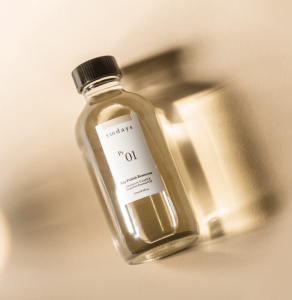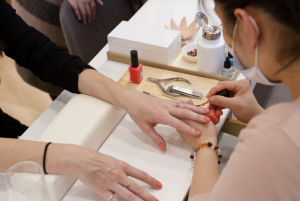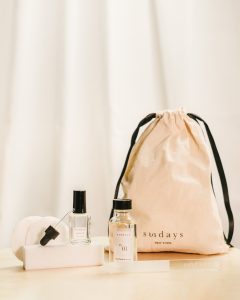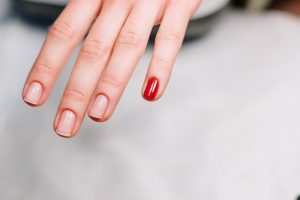You found our guide to How Long a Manicure Should Last!
In the world of wellness and city living, details matter—especially when they’re as visible and expressive as your nails. We often get asked, “How long should a manicure last?” It’s a common question among women who prioritize clean beauty and want to make sure they’re getting the most out of their manis without damaging their nails. If you find yourself constantly repainting, it might be time to reconsider not only your polish but your polish philosophy.
Interested in nail health and manicure tips? Check out Eco-Paraffin vs. Regular Paraffin Wax: Why Non-Toxic Nail Care Matters.
This list includes:
- Lifespan of a manicure
- How often to repaint your nails
- How is non-toxic polish healthier?
- Chemicals in normal polish
- Healthy nail tips
Let’s dive right in!
Lifespan of a Manicure: Why is Nontoxic Important?
The Lifespan of a Manicure: What’s Normal?
Typically, a professional manicure—whether classic or gel—should last anywhere from 5 to 14 days, depending on the formula used, the condition of your natural nails, and how much wear and tear your hands experience daily. Gel manicures tend to promise up to two weeks of chip-free shine, while a traditional polish may last closer to a week, with proper prep and care.
But if you’re finding chips within days or polish peeling in record time, it could be your polish—not your technique—that’s the problem. Not all lacquers are created equal, and many conventional formulas include ingredients that compromise the health of the nail bed over time.
Swapping your polishes for non-toxic options is a great way to keep your nails healthy while maintaining a long lasting manicure.
Learn more about Sunday’s Non-Toxic Polish Collection!
What Happens When You Repaint Too Often?
While it may feel satisfying to freshen your manicure every few days, there’s a hidden cost beneath that glossy finish. Repeated application and removal—especially with harsh acetone-based removers—can leave nails brittle, dehydrated, and more prone to breakage. The natural keratin layers of the nail plate weaken with constant exposure to toxins and friction, often resulting in peeling, yellowing, and slow growth.
Worse still, many conventional polishes contain endocrine-disrupting chemicals like formaldehyde, toluene, and DBP (dibutyl phthalate). With frequent use, these ingredients don’t just degrade nail integrity—they can seep into your body through the nail bed, especially if the skin around your nails is cracked or inflamed.
At Sundays, we believe tat beauty shouldn’t compromise your health. We developed polishes that are “10-free”, meaning they’re free from the 10 harshest endocrine-disrupting chemicals found in other polishes. Even our polish remover is formulated with your health in mind, and follows the same clean-beauty, non-toxic standards of the rest of our products.
Learn more about Sundays Grapefruit Peel Oil Polish Remover!
The Clean Beauty Solution: Why Nontoxic Polish Matters
The clean beauty revolution has touched every corner of our self-care routines, and nail care is no exception. Opting for nontoxic, “10-free” nail polishes means eliminating many of the known irritants and potential carcinogens found in traditional formulas.
Nontoxic nail polish uses plant-derived solvents, breathable formulas, and pigment technology that still delivers on color and longevity. You can get salon-level results without compromising your health or the environment. And when touch-ups are needed—as they inevitably are—they’re gentler on your nails, skin, and system.
Repainting as Ritual, Not Rescue
When you shift to nontoxic polish, repainting becomes less about damage control and more about a luxurious moment of pause. It’s an act of self-expression rooted in intention, not urgency. Whether you’re switching up your shade for a downtown event, a Hamptons weekend, or simply to match your mood, clean nail care ensures that each step—from remover to top coat—supports long-term nail health.
There’s something deeply elegant about choosing products that honor both your aesthetic and your well-being. Sundays is here to support you on your journey to non-toxic nail care, and we wholeheartedly believe in the power of nail care as a ritual for the wellness of your whole self.
Check out sundays studio for a holistic wellness experience that lets you prioritize, well, you!
Nail Health from the Inside Out
No polish—clean or otherwise—can make up for compromised nail health. A strong manicure starts with strong nails. Consider biotin-rich foods, omega-3 fatty acids, and daily hydration as part of your beauty ritual. Regularly massage cuticle oil (look for jojoba or almond-based blends) and give your nails the occasional break from polish to let them breathe and regenerate.
It’s also wise to seek out nail salons that align with your clean beauty values. NYC is filled with chic, nontoxic nail bars offering immaculate service without the chemical cloud. Think: filtered air, organic scrubs, and luxe non-toxic brands like Sundays!.
Interested in learning more? Check out our other blog post learn more about how to Nourish Your Nails: Best Foods For Strong, Healthy Growth.
Final Thoughts
Your nails tell a story. When cared for consciously, they reflect balance, beauty, and vibrancy. If you’re constantly repainting, it’s not just about longevity—it’s a sign to reassess what you’re putting on your body. Choosing nontoxic nail polish is more than a trend; it’s a commitment to clean beauty and empowered self-care in every glossy, gorgeous detail.
Enjoyed this article? Next, check out What Non-Toxic Swaps Can I Make to Better My Wellness Routine?






